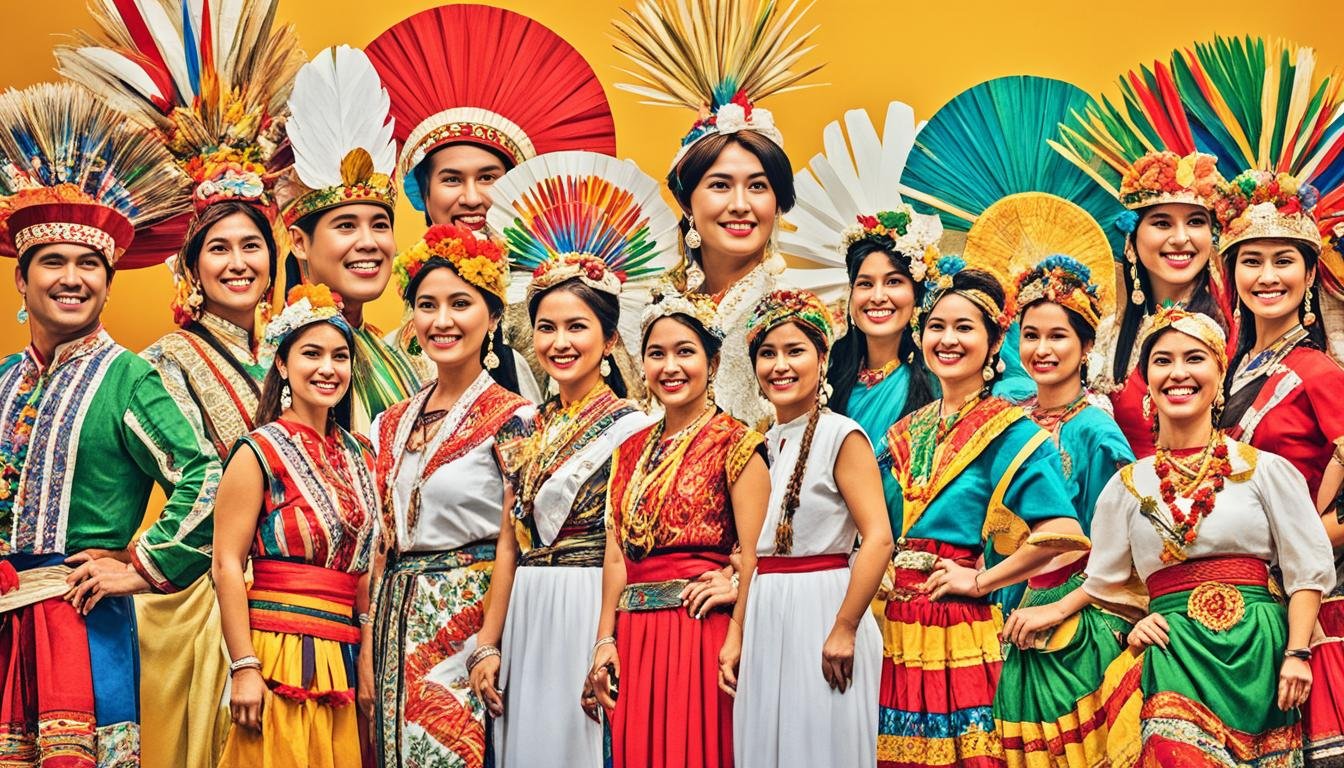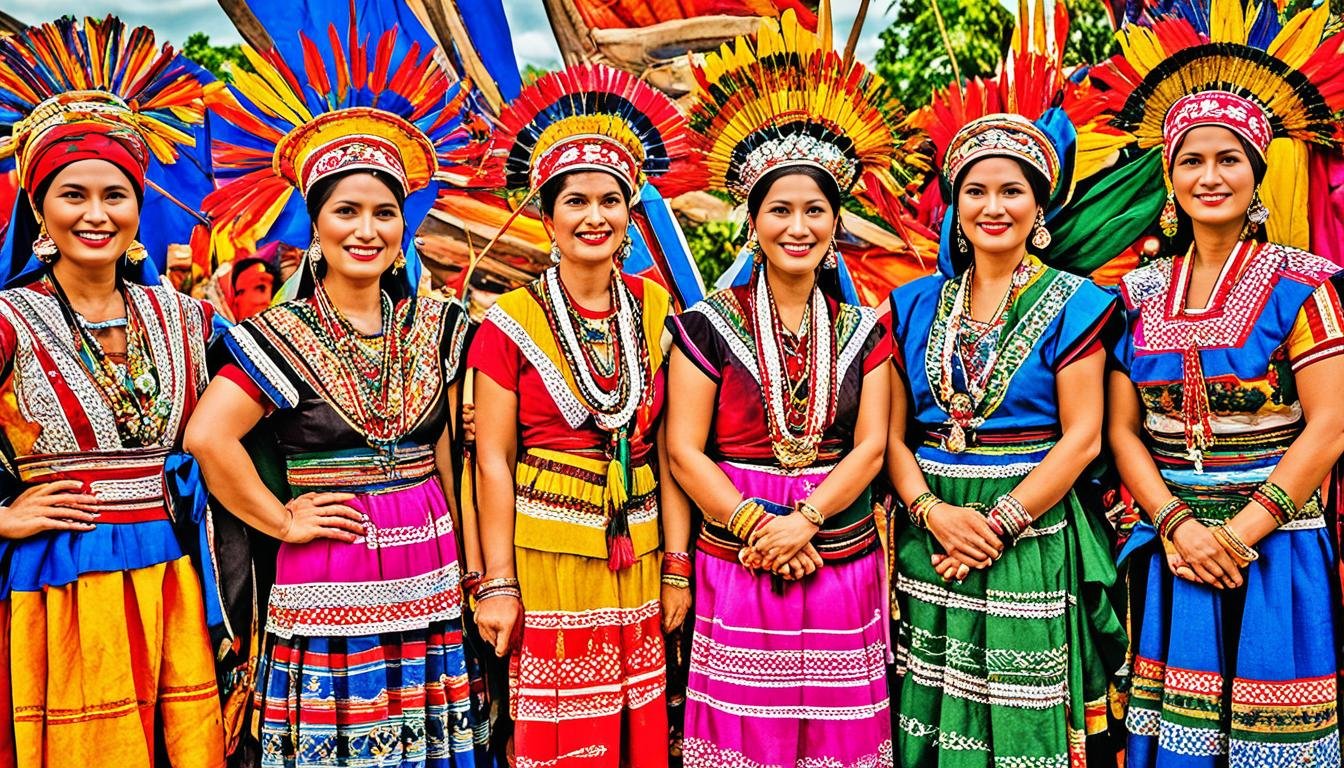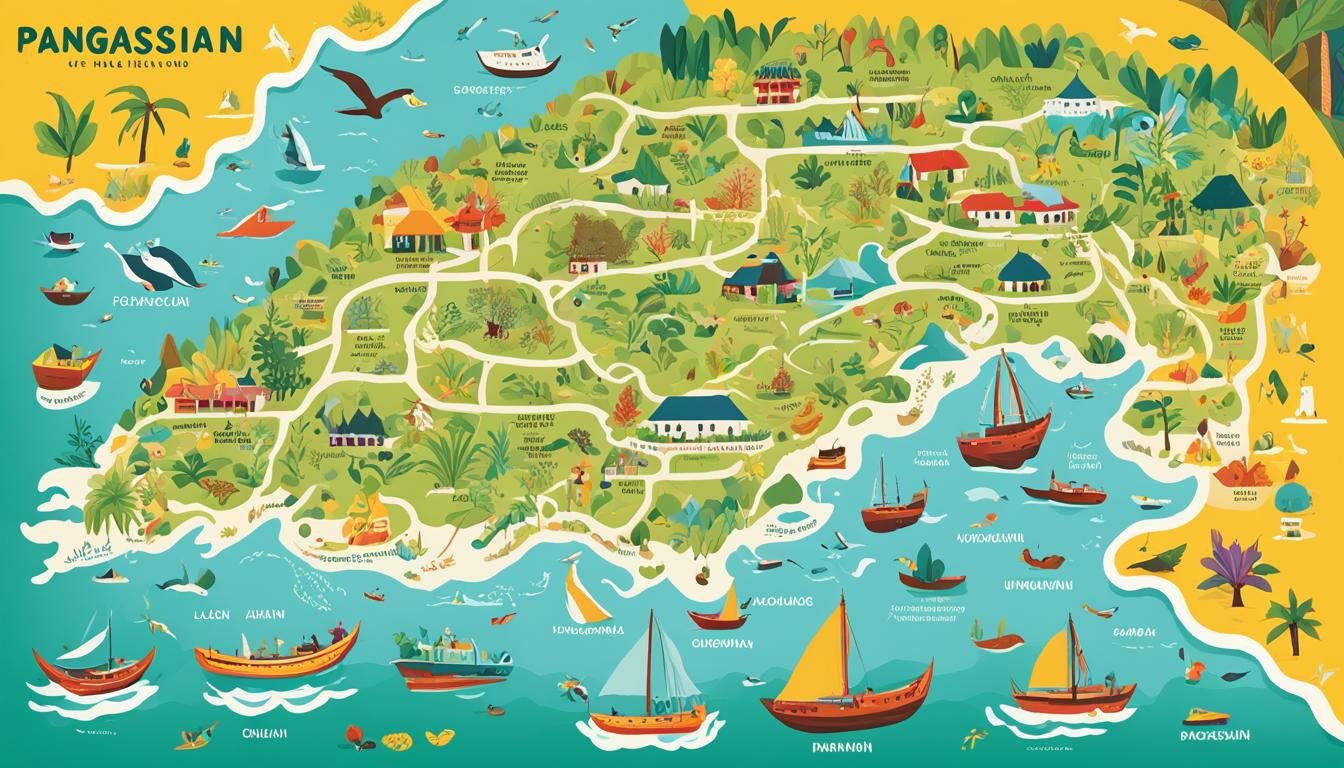Have you ever wondered about the diverse languages spoken in Pangasinan? Did you know that besides the Pangasinan language, there are other language variations that contribute to the linguistic heritage of the region? And what about the influence of Ilocano in Pangasinan? Let’s delve into the fascinating world of language in Pangasinan and challenge our understanding of linguistic harmony in this province.
Key Takeaways:
- Pangasinan is a province in the Philippines known for its rich linguistic diversity.
- The Pangasinan language, influenced by the Austronesian language family, is the primary language spoken in Pangasinan.
- The region also has dialects of the Pangasinan language with subtle variations.
- The prevalence of the Ilocano language in Pangasinan is due to historical migration and intermarriage.
- In addition to Pangasinan and Ilocano, other indigenous languages like Bolinao and Sambal are spoken in specific areas of Pangasinan.
Pangasinan Language
The Pangasinan language, also referred to as Pangasinense, is an Austronesian language spoken primarily in Pangasinan province. It belongs to the Malayo-Polynesian branch of the Austronesian language family, which encompasses a vast number of languages spoken in Southeast Asia and the Pacific Islands. The Pangasinan language has its own unique grammatical structure and vocabulary, reflecting the region’s distinct linguistic heritage.
Origins and Place within the Austronesian Language Family
The Pangasinan language traces its origins back to the Austronesian migration. Austronesian languages are spoken by various indigenous communities across the Philippines and other parts of Southeast Asia and the Pacific Islands. These languages share common linguistic features and are believed to have originated from a common ancestral language.
Within the Austronesian language family, the Pangasinan language holds a significant place as one of the major languages spoken in the Philippines. Its unique characteristics and distinct vocabulary contribute to the linguistic diversity of the region.
Dialects of Pangasinan
Within the province of Pangasinan, several dialects of the Pangasinan language are spoken, each with its own subtle variations. These dialects are a result of the geographical and cultural diversity within the province.
| Dialect | Area | Characteristics |
|---|---|---|
| Eastern Pangasinan | Eastern part of Pangasinan | Pronunciation and vocabulary variations |
| Bolinao Pangasinan | Western coastal areas of Pangasinan | Differences in vocabulary and accent |
| Central Pangasinan | Central region of Pangasinan | Distinct pronunciation and vocabulary |
The dialects of the Pangasinan language reflect the unique linguistic heritage and cultural identity of different communities within the province. While there are variations in pronunciation and vocabulary, speakers of different dialects can generally understand each other.
Ilocano Influence
While Pangasinan is the primary language spoken in the province, the prevalence of Ilocano cannot be overlooked. Many Pangasinenses are bilingual and proficient in both the Pangasinan language and Ilocano. The influence of Ilocano can be attributed to historical migration and intermarriage between Ilocano-speaking communities and the local Pangasinan population.
Prevalence of Ilocano in Pangasinan
In Pangasinan, the influence of Ilocano is evident in daily life and communication. It is common to hear individuals seamlessly switch between Pangasinan and Ilocano while conversing with others. Bilingualism is prevalent, with the Pangasinenses embracing both languages as part of their cultural identity. This linguistic harmony allows for effective communication and promotes tolerance and understanding among different language communities in Pangasinan.

Historical Context of Ilocano Influence
The historical context of the Ilocano influence in Pangasinan can be traced back to the Spanish colonial period. During this time, the Ilocanos migrated to Pangasinan as laborers and traders, establishing close ties with the local population. The shared geographical proximity between Pangasinan and Ilocos Region facilitated cultural interchange and language exchange. Over time, the Ilocano language became widely used and accepted in Pangasinan, integrating into daily life and communication alongside the Pangasinan language.
Other Languages of Pangasinan
In addition to the Pangasinan language and Ilocano, Pangasinan province is home to other distinct languages that contribute to its linguistic diversity. The Bolinao language is predominantly spoken in the western coastal areas, while the Sambal language is spoken in the eastern part of the province.
Bolinao and Sambal
The Bolinao language is an indigenous language spoken primarily in the town of Bolinao and its neighboring municipalities. It is an important part of the cultural heritage of these communities and reflects the unique identity of its speakers.
The Sambal language, on the other hand, is spoken in the town of Infanta and parts of nearby areas. Like Bolinao, Sambal contributes to the linguistic diversity of Pangasinan and plays a significant role in preserving the cultural heritage of the region.
Where are Bolinao and Sambal Spoken?
The Bolinao language is primarily spoken in the western coastal areas of Pangasinan, including the town of Bolinao and its neighboring municipalities. These areas are known for their beautiful beaches and vibrant culture. If you ever visit this part of Pangasinan, you may have the opportunity to hear and learn Bolinao firsthand.
The Sambal language, on the other hand, is spoken in the eastern part of Pangasinan, particularly in the town of Infanta and parts of nearby areas. This region is known for its stunning landscapes and is a gateway to the Zambales mountain range. Exploring the area will give you a chance to encounter the Sambal language and its unique expressions.
Overall, the Bolinao and Sambal languages are important components of the linguistic landscape in Pangasinan, showcasing the richness of indigenous languages in the region and the cultural diversity that makes Pangasinan a truly captivating destination.
Linguistic Diversity and Harmony
The linguistic diversity of Pangasinan brings both benefits and challenges to the region. On one hand, multilingualism allows for cultural preservation and facilitates communication among different communities. The coexistence of multiple languages in Pangasinan creates a vibrant environment where individuals can express their cultural identities through language. It fosters a sense of belonging and strengthens community ties.
This linguistic diversity also plays a crucial role in preserving the linguistic heritage of Pangasinan. Languages are integral to cultural expression and serve as repositories of historical and traditional knowledge. By maintaining and promoting the use of various languages, Pangasinan can ensure the continuity of its rich cultural heritage and prevent the loss of linguistic diversity.
Furthermore, linguistic diversity enhances intercultural understanding and promotes dialogue between different communities. It allows for the exchange of ideas, perspectives, and experiences, fostering a sense of shared humanity. Through multilingualism, Pangasinan embraces inclusivity and celebrates the linguistic contributions of all its communities.
However, the presence of multiple languages also poses challenges, particularly in education and language preservation efforts. Ensuring equal access to quality education in different languages can be complex, requiring resources and trained educators proficient in various languages. Language preservation efforts must navigate the complexities of balancing the need to preserve linguistic diversity with the practicality of promoting widespread language proficiency.
To navigate these challenges, it is crucial to approach multilingualism with sensitivity, respect, and support for each linguistic community’s identity. By fostering linguistic harmony, Pangasinan can create an inclusive society that celebrates and preserves its rich linguistic tapestry.

| Language | Location |
|---|---|
| Pangasinan | Pangasinan province |
| Ilocano | Throughout Pangasinan |
| Bolinao | Western coastal areas |
| Sambal | Eastern part of the province |
Conclusion
In conclusion, Pangasinan serves as a linguistic hub in the Philippines, where the Pangasinan language, Ilocano, and other indigenous languages coexist harmoniously. The diversity of languages in the region is a testament to the rich cultural heritage and vibrant linguistic tapestry of Pangasinan.
To truly immerse yourself in the cultural experience of Pangasinan, consider learning a few key phrases in the Pangasinan language. Engage with the local communities and embrace the opportunity to communicate in their native tongue. This not only enhances your cultural understanding, but also contributes to the preservation and promotion of Pangasinan’s unique linguistic heritage.
By actively participating in language preservation efforts, you play a crucial role in ensuring that future generations can continue to appreciate the beauty and significance of the Pangasinan language. Embrace the cultural diversity of Pangasinan and seize the opportunity to learn and connect through the power of language.
